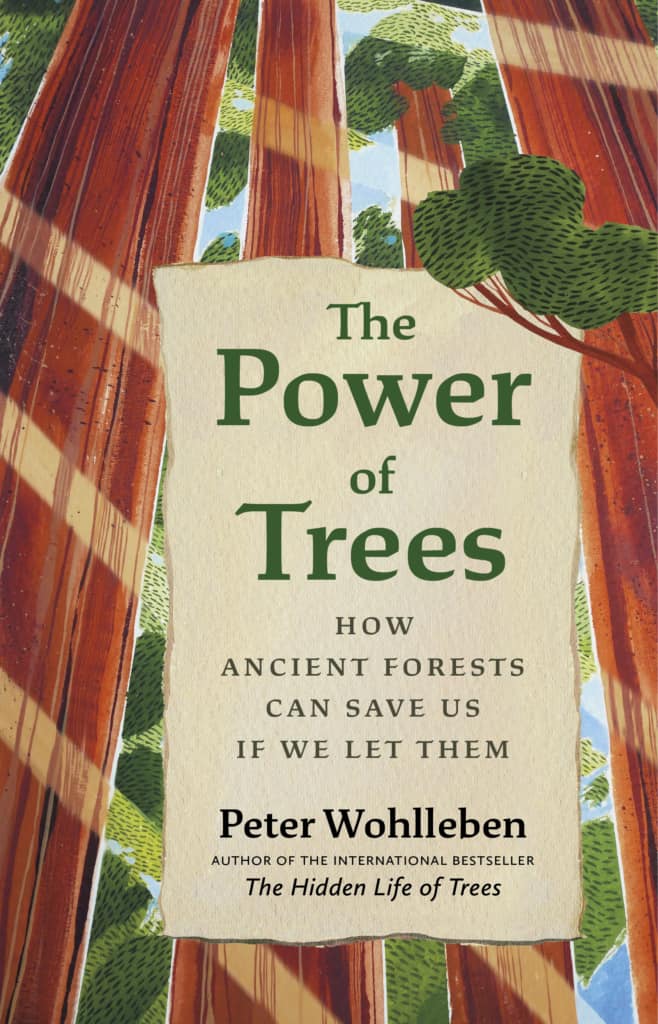
The Power of Trees
The future of forests and the future of humanity are inextricably entwined. I’m not saying this for dramatic effect; it is simply a fact. As bleak and frightening as these words sound, they actually offer a great deal of hope. Trees are so adept at creating communities that many of them can cope with the current level of climate change. They are also our best option for removing greenhouse gases from the atmosphere, doing so much more efficiently than any technological fix we could ever come up with. They also markedly cool climates locally and significantly increase rainfall.
Trees, by the way, are doing all this not for us, but for themselves. Like people, trees don’t like conditions to be too hot or too dry. Unlike people, they can turn the thermostat back down a bit. That said, beeches, oaks, and spruce are not born with all the skills they need to effect these changes. On their long journey to becoming old trees, they must learn how to adapt. Not every tree succeeds, because these enormous plants are just like people: there are huge variations between individuals, and they don’t all learn at the same speed or draw the right conclusions from their life experiences.

In this virtual journey through the forest, I’ll show you how you can watch trees learn, why it’s not necessarily a problem for beeches or oaks if they drop their leaves in summer, and how you can tell when trees have opted for the wrong survival strategies.
Even though science has made great progress in bringing the hidden life of trees out into the open, the curtain has still barely been lifted. The role played by tiny organisms such as bacteria and fungi, for example, remains largely unexamined, primarily because most species are as yet undiscovered. And yet these tiny life-forms are as important to trees as our gut microbiome is to us: without these microorganisms life would not be possible for either trees or humans. Fascinating new details from this hidden world reveal that each tree is an ecosystem in its own right, like a planet populated by an infinite number of amazing life-forms.
When we step back, the big picture also reveals surprises. Forests create atmospheric rivers carrying water in cloudbanks that travel thousands of miles into the interior of continents, dropping rain on regions that would otherwise be deserts.
Trees, therefore, are not life-forms that stand there and suffer as human activity changes the global climate. Rather, they are creatures rooted in their environments that react when conditions threaten to get out of control.
There are, however, two things trees need to be able to adapt successfully: time and being left alone. Every intervention sets the forest ecosystem back and prevents it from establishing a new equilibrium. If you have walked by clear- cuts in Germany recently, which are some of the largest in decades, you will probably already have noticed the extent to which modern forest practices interfere with the trees’ ability to recalibrate.
But there is hope! Forests return quickly and vigorously when they are allowed to grow back on their own. All we need to do is to accept that we cannot create forests; the best we can do is to set out plantations. A better way for us to help trees is to step aside and allow natural reforestation to take its course. If we maintain an appropriate level of humility about our abilities and optimism about the power of nature to heal itself, the future can be one thing above all—green!

Adapted with the permission of the publisher from the book The Power of Trees: How Ancient Forests Can Save Us if We Let Them, written by Peter Wohlleben, translated by Jane Billinghurst and published by Greystone Books in May, 2023. Available wherever books are sold.
Top photo by Lukasz Szmigiel on Unsplash

